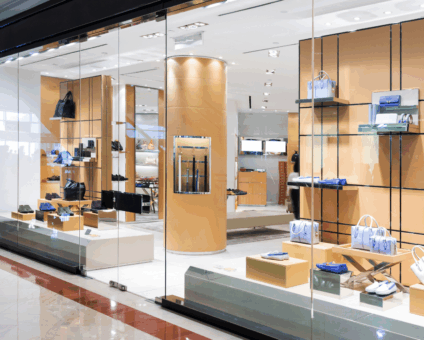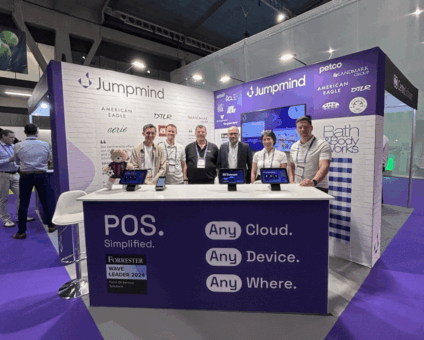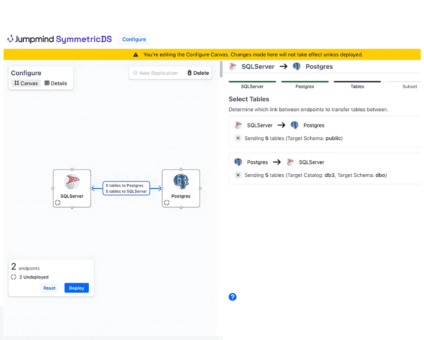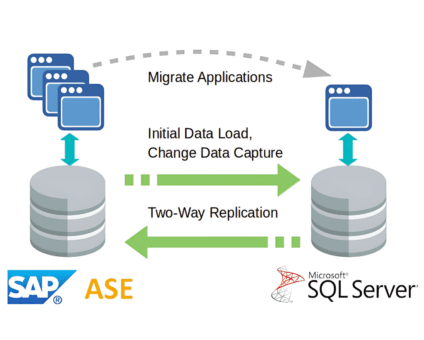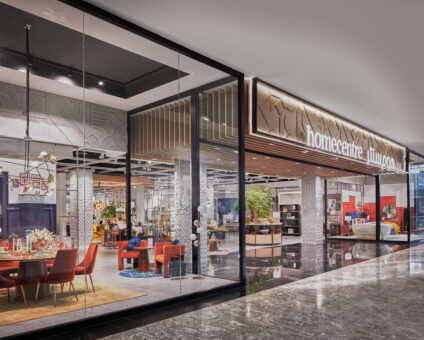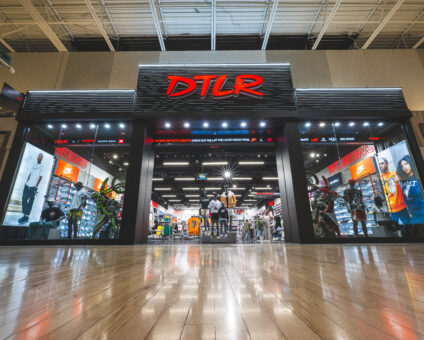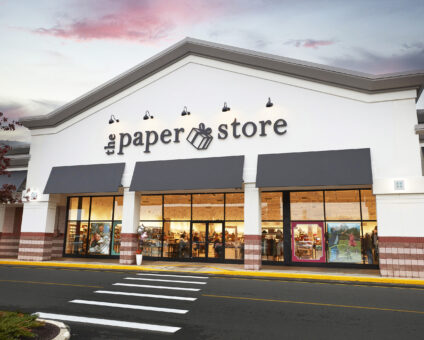Physical retail is still where the magic happens. According to new research by RSR, 85% …
Beyond the Hype: What Retailers Really Want from Tech in 2025
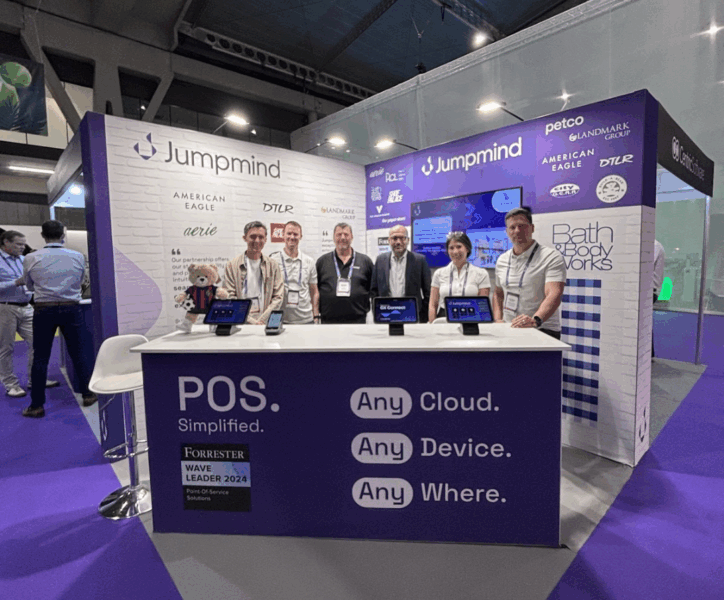
Beyond the Hype: What Retailers Really Want from Tech in 2025
Europe’s biggest retail conference didn’t disappoint. From AI startups to heritage fashion houses, ShopTalk Europe 2025 brought out familiar buzzwords and some newer ones (Agentic Commerce, anyone?). But beneath the hype, a more grounded story was taking shape: retailers aren’t just chasing innovation, they’re looking for focus, simplicity, and tangible value.
We came to Barcelona asking questions like: What matters most to today’s retail leaders? Where does hype end and real transformation begin? And what can the rest of the market learn from luxury’s evolution?
Here’s what stood out:
- AI Is Everywhere, But Retailers Are Asking: To What End?
Nearly every session name-checked AI. But rather than blind enthusiasm, the tone was measured, even cautious. Noorin Virani, Group Director of Data & Insights at LVMH, emphasized adoption over experimentation, explaining how centralized algorithms at the group level scale across their 75 Maisons, saving cost and enabling access. Michael Ward, Managing Director of Harrods took a similar stance. AI is powerful, yes, but only when grounded in a clear purpose and embedded in the business, not layered on top.
The sentiment from many retailers we spoke with: AI is a toolkit, not a silver bullet. When every vendor claims to be “AI-powered,” what sets one apart is intentionality. Are you solving real problems, or just rebranding your roadmap?
Nicolas Kröger, Chief Digital Transformation Officer at Manor (part of Moss Frères Group), which includes brands like Lacoste and Gant, offered a framework for responsible AI adoption. Their goals? Automate, simplify, and elevate. They built a bottom-up “AI Circle.” Mid-managers across departments meet monthly to test tools, train prompting, and identify impactful use cases, paired with a top-down transformation unit that acts like an AI center of excellence.
Nicolas shared that the company’s most compelling use case was to let business users “chat with their data.” Users ask questions in natural language, and the system translates those into SQL, runs them, and returns clear, validated insights. The architecture combines large language models with guardrails for accuracy and trust. The result: teams move faster, iterate directly, and treat data as a true collaborator.
- “Composable” vs. Consolidated: It Depends on the Business
Rather than swinging between extremes, many retailers are taking a more pragmatic stance. The right architecture depends on the brand’s goals, associate needs, and what kind of experience they want to deliver.
Rajesh Shanmugasundaram, Chief Technology Officer at luxury watchmaker Breitling, put it plainly: “As long as my associates have a single experience that meets their needs, I don’t care if it’s powered by ten vendors or one.” His framework for build vs buy: if a solution gets you 80% of the way, buy it; if it’s only 20%, build it. The focus isn’t ideological. It’s about business value, speed, and cohesion.
There was also a reminder that marketing jargon doesn’t inherently translate to value. Everyone says they’re API-first, cloud-native, headless. But as one speaker argued, “What matters isn’t the label. It’s the ability to adapt over time. Can you pivot? Can you swap modules without burning everything down? That’s what agility really means.
- What the Expo Said vs. What Retailers Talked About
On the show floor, digital commerce and AI dominated. But in private conversations, physical stores took center stage.
Retailers voiced frustration with clunky tools, fragmented workflows, and mobile limitations. Associates toggle between systems to complete basic tasks like capturing customer data, applying promotions, and handling fulfillment.
Several brands are rethinking store systems with a focus on operational fluidity: fewer systems, faster workflows, and a single pane of glass. It’s not just about empowering store teams. It’s about unifying action and creating space for more meaningful customer interaction.
- Experience as Differentiator: Lessons from the Retail Safari
One of the more energizing moments came from the Retail Safari – a guided tour through Barcelona’s most design-forward stores. These weren’t just shops. They were creative studios, brand theaters, and conversation starters.
Highlights included:
- Lynk & Co., which trades the traditional car showroom for a community space with one car and endless culture.
- Zara Home, where restraint and minimalism take center stage, inviting slow exploration rather than fast conversion.
- Stradivarius, with a self-serve returns vault and a fragrance lab that turned scent into play.
- Nude Project, an online-born brand using scarcity, line-ups, and loyal community energy to turn a tiny space into a movement.
What united them all? Control. Many operated their own spaces, allowing for deliberate storytelling and bold experimentation. The takeaways: premiumization isn’t reserved for luxury. Design can stretch margins. Culture builds conversion.
- Luxury Has Always Led on Experience But Now the Stakes Are Higher
Luxury brands have always known it’s not just what you sell, but how you make people feel. The doorman who knows your name. The tissue paper that feels like a ritual. The subtle choreography of every touchpoint.
But today, those tactics are seeping into every corner of retail. Premium is the new normal. Emotional resonance is everyone’s game.
Luxury, meanwhile, is evolving too. Digital once felt like a threat. How could an app ever match the magic of a flagship? Now, it’s a new canvas. The challenge is translating intimacy into tech-enabled experiences that still feel deeply personal.
One luxury retailer shared how they’re using AI to optimize stock, personalize communications, and surface insights without losing the human touch. Buyers still walk into showrooms and “switch it all off,” trusting their eye, their feel, their flair.
Diane von Furstenberg’s CEO Graziano de Boni echoed the same ethos: rooted in brand DNA, driven by customer connection. They’re experimenting, yes, but always with purpose. Luxury’s true advantage isn’t exclusivity. It’s clarity of intent and the power to make every detail count.
- Agility Isn’t Just a Feature, It’s a Mindset
Over and over, the message came through: you can’t just adopt new tools. You have to change how you work. Across nearly every session, the most compelling stories weren’t about platforms. They were about how people work. The brands and retailers making real progress aren’t the ones with the flashiest tools; they’re the ones that have built a culture of adaptability.
Flaconi, a German digital-first beauty retailer, is embedding agility into the fabric of its operations. Radharaman (Rad) Jha, VP of Supply Chain, described how the company prioritizes organizational agility as a competitive advantage. Its teams use data not just to react, but to predict by forecasting demand more accurately, personalizing merchandising, and avoiding costly overbuying. Rad said that the secret isn’t just smarter algorithms. It’s how the company structures its teams: breaking down silos, democratizing access to insights, and empowering business users to make real-time decisions without relying on centralized gatekeepers.
Final Thought
The future of retail won’t be defined by who shouts “AI” the loudest. It will be led by the brands that make technology feel human, stores feel magical, and operations feel seamless.
In a world of infinite choice, experience is the real differentiator. The brands that win won’t just chase what’s new, they’ll build what’s meaningful.
And those are the conversations we came to have.
See you at ShopTalk next year!

